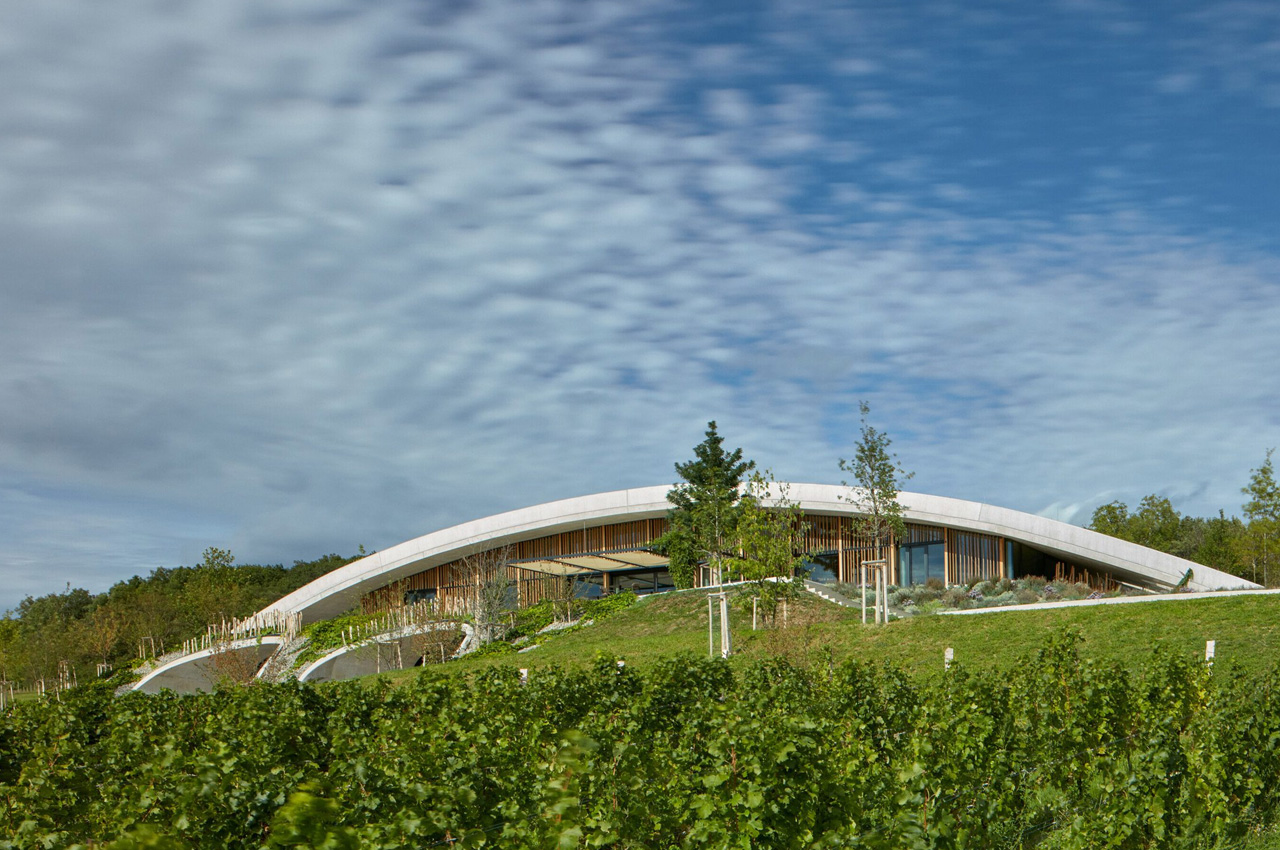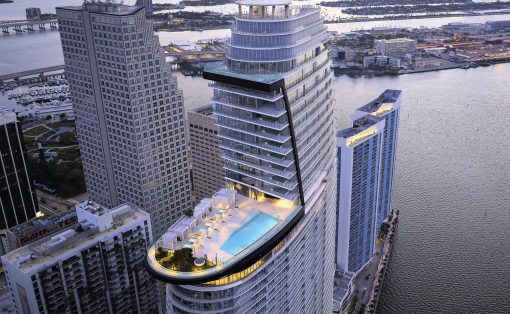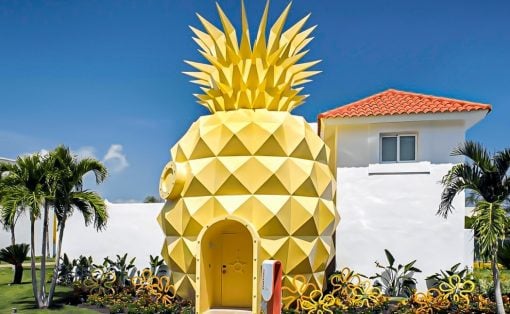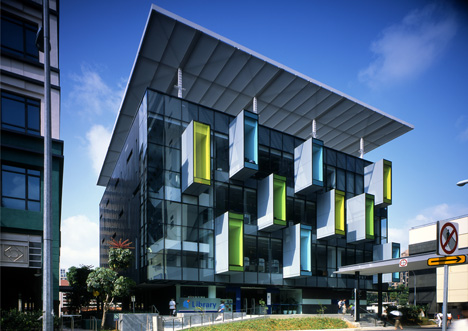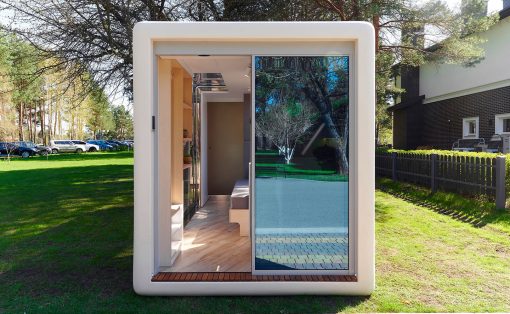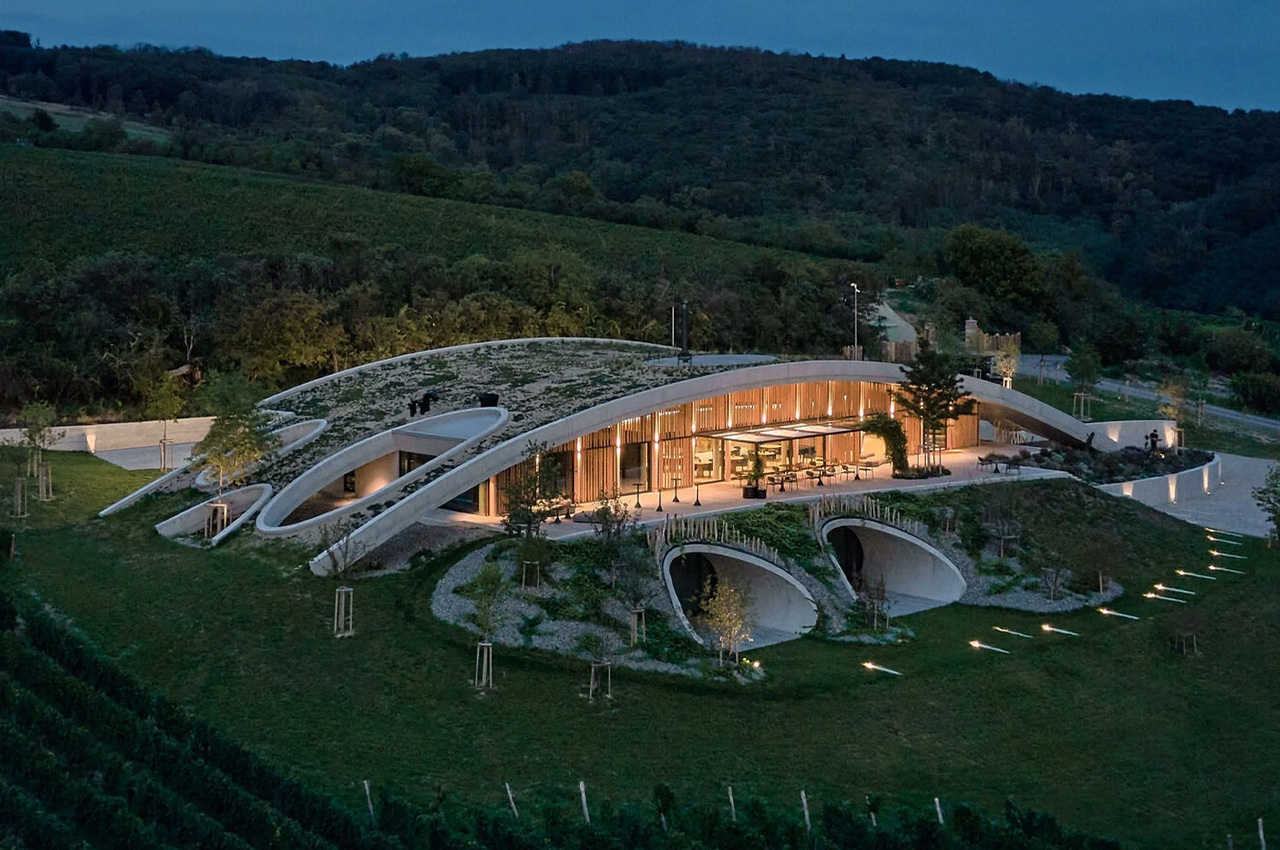
The Gurdau Winery in the Czech Republic is tucked away in the lush rolling landscape of beautiful fields and vineyards located outside the village of Kurdějov. It is historically known to be one of the region’s most important wine-growing site sites and has recently received a large inflow of wine tourism. Local practice Aleš Fiala studio designed a sweeping and sloping grass-topped concrete roof over the winery to subtly conceal it.
Designer: Aleš Fiala Studio
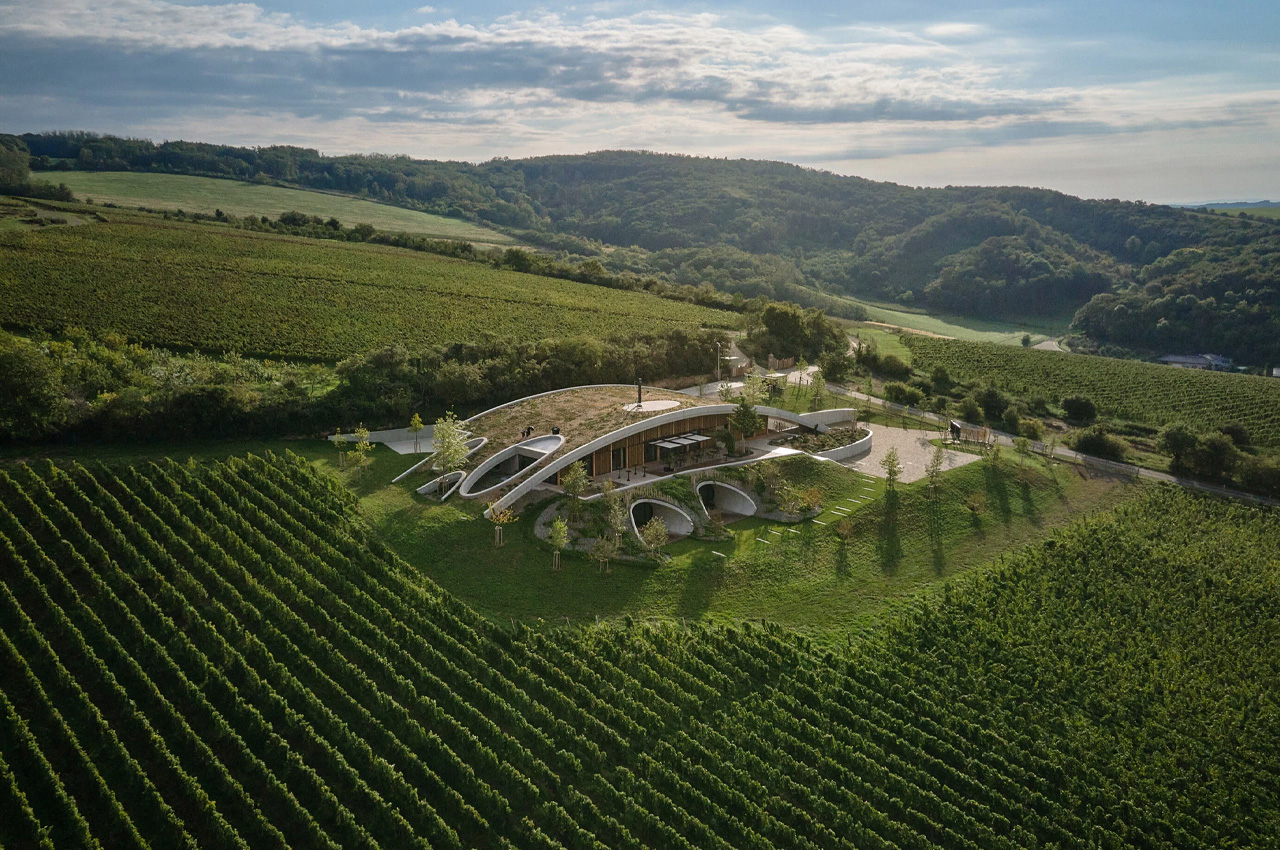
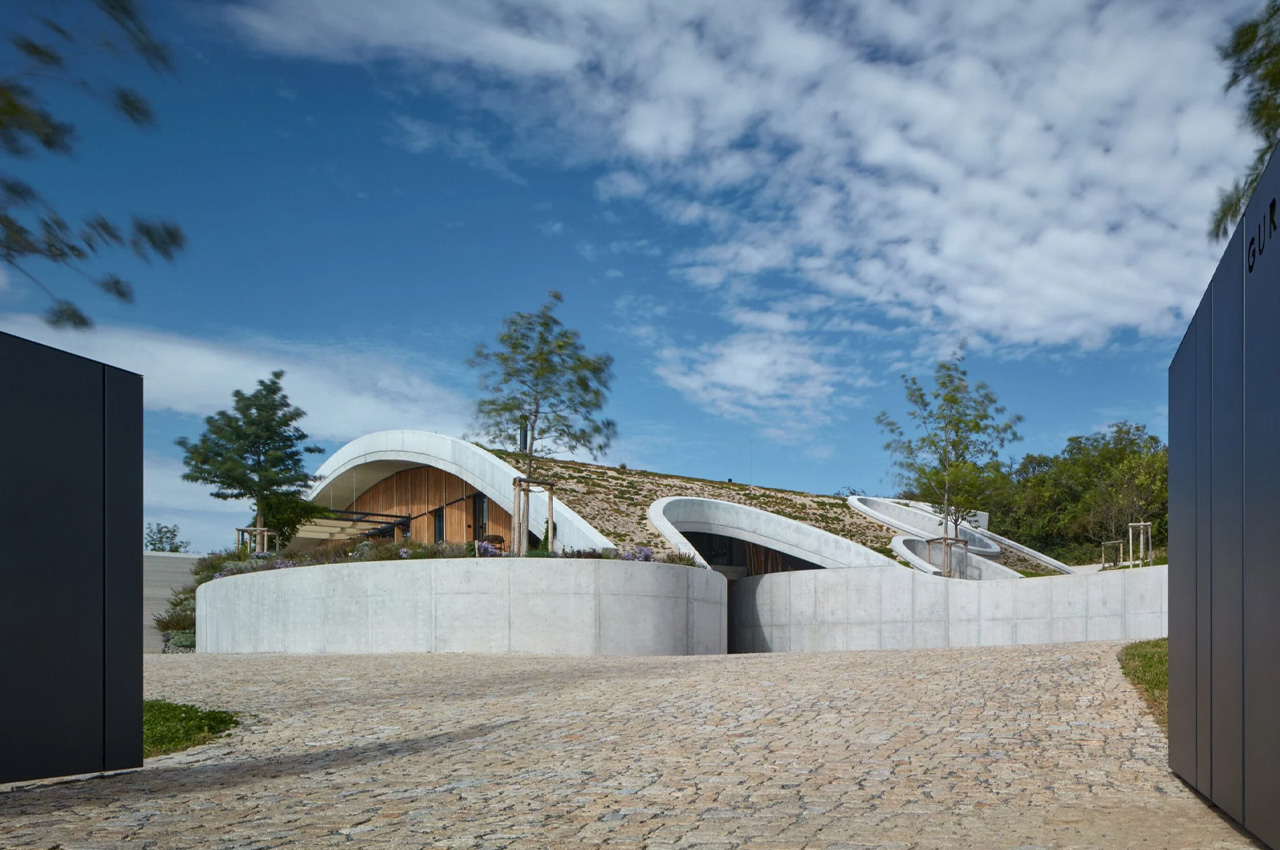
The idea behind the sweeping green roof was to help the new building subtly and seamlessly merge with its green landscape. Concrete tunnels were dug into the site to create “cultivated encounters and connections between man, wine, and landscape,” the studio said. “The landscape context is addressed in the form of a gentle curve – a wave in the landscape, a hill between hills…great care has been taken to incorporate the building into the terrain and its connection to the cultural and natural greenery,” architect Aleš Fiala said.
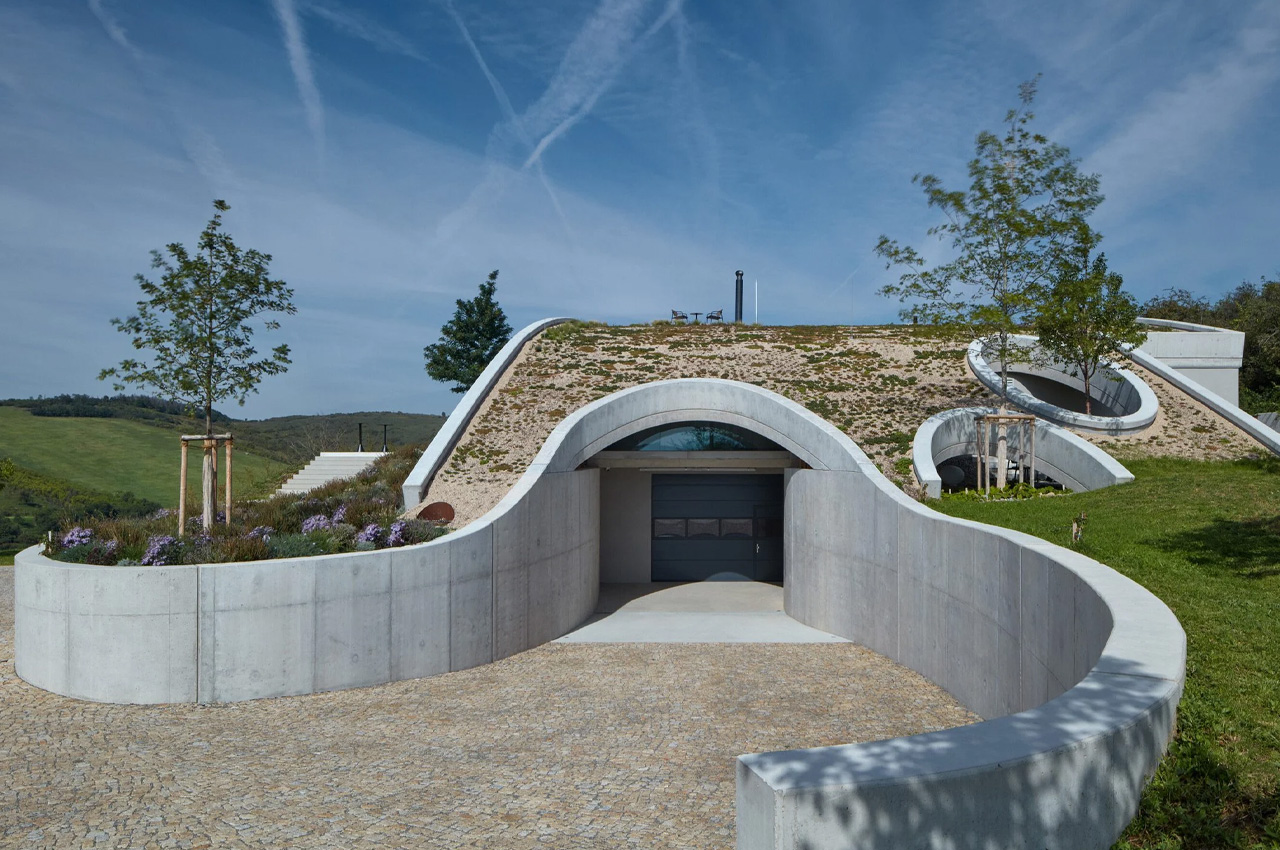

“Embedding the building in the terrain creates a feeling of a welcoming background and a natural blending with the place from which the wine comes,” Fiala continued. The sweeping roof and the ground meet, allowing the building to blend with a series of winding concrete walls that supports planters around a paved patio. The back of the building features massive concrete columns that form a parking and delivery area. The roof has been marked with large circular cut-outs that merge with the glazing on the ground floor, allowing the winery’s reception and tasting rooms to be filled with streaming natural light.
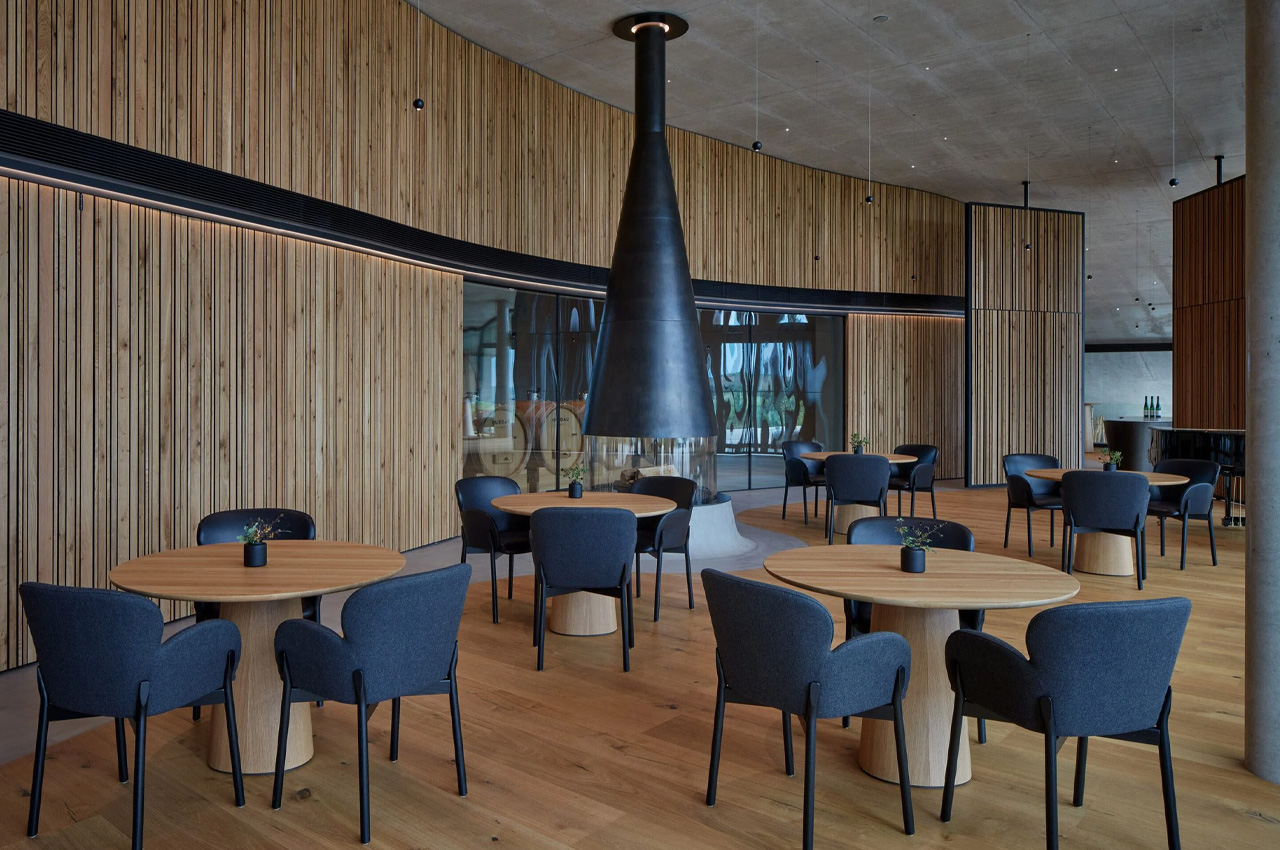

The front of the winery includes a large terrace that can be entered via a glazed facade, which is protected from the sun with the help of wooden slats and a sleep canopy. The basement level houses the processing area and two apartments for visitors. “The production areas are located under the terrain, while the customer areas are open to the sun through a glass facade, thus making use of passive energy,” explained Fiala. “The spaces of the wine house are changeable and conducive to social, and romantic moments as well as quiet contemplation over a glass of wine,” he concluded.
